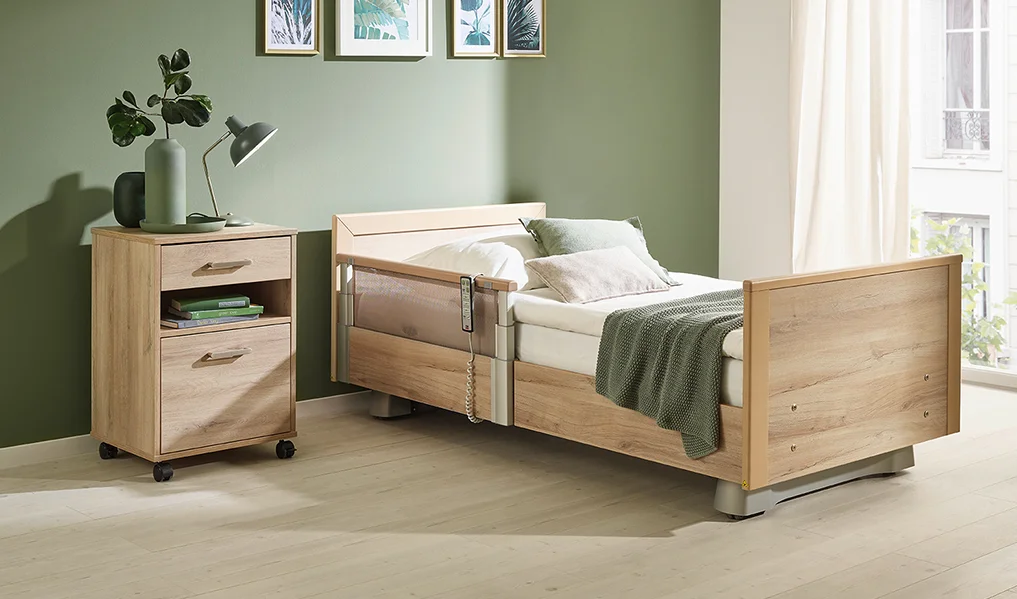3 key ways to avoid or minimise falls from bed
Posted on 14 September 2017 By Aaron Stretton

In This Article
Whether you’re a care home, hospice, hospital, or any other care environment, we’re sure you are already well-aware of this…
Whether you’re a care home, hospice, hospital, or any other care environment, we’re sure you are already well-aware of this issue. People and patients falling out of bed is incredibly dangerous, and what’s more, it can be avoided. There are 3 key things you can use to minimise injuries from bed falls, or just stop them altogether.
1/ Use a pair of siderails
It’s a fairly straightforward method, but fixing a pair of siderails to a care bed will prevent the user from falling out. This is a good solution for an individual who is perhaps temporarily having issues with bed falls and such, as the siderails can be removed afterwards. That being said, there are lots of issues with add-on siderails that can cause more harm than good to vulnerable patients (see our blog on safe use of bedrails for more information). We would always recommend getting beds with built-in siderails for completely safety and guideline compliance.
2/ Use a bed with built-in siderails
As we just mentioned, built-in siderails are far superior to standalone ones. Beds with built-in siderails will already comply with the Medicines and Healthcare Products Regulatory Act (MHRA). They will fit flush to the bed, reducing the chance of patient’s body from slipping down into any unnecessarily large gaps.
We understand that even built-in siderails aren’t always particularly nice looking. The cold, metal bars can even make the patient feel imprisoned and can cause distress to those with Dementia or mental health problems. Beds like the Liberta really help with this. The side panels offer a completely sturdy barrier that will stop users from rolling out of bed. Made with a mesh fabric, these side panels allow light through and offer a much more comprehensive view from the bed. The fact that the individual isn’t looking through bars is a great step forward in minimising agitation and such, therefore helping to enhance the quality of care given.
3/ Try a low bed
Understandably, siderails and mesh side panels might still be a little too much for some patients. They can make some users feel confined, which again can be detrimental to their mental health and mood.
Low beds are a great alternative, and whilst they might not stop the person from falling out of bed, they will minimise any injuries. Equipped with a much lower mattress platform than a standard bed, a low bed is closer to the ground to reduce the distance the individual falls. Our LowLine bed goes down to a mere 10cm from the floor, which is great in places like care homes and hospice. Where other low beds have unsightly high bed ends (which hold the motors), the LowLine has removable low bed ends that will help to keep a certain homely feel about the environment.
The LowLine can also be used with floor mats that will again help to reduce the amount of damage that could be caused by falling from bed.
Summary
These are 3 simple ways that will help to prevent and minimise falls injuries from bed — particularly in care homes, hospices, and other multi-user environments. Any one of these methods will help to safeguard patients/residents who may be more susceptible to falls from bed, which in turn will improve their quality of life and care.
We think you might also be interested in...
Speak to The Experts
Need assistance with product enquiries, general inquiries, or product support? Our Phonelines are open 9am - 5pm Monday to Friday
0113 519 0319
Or, fill out the form for a call back.
